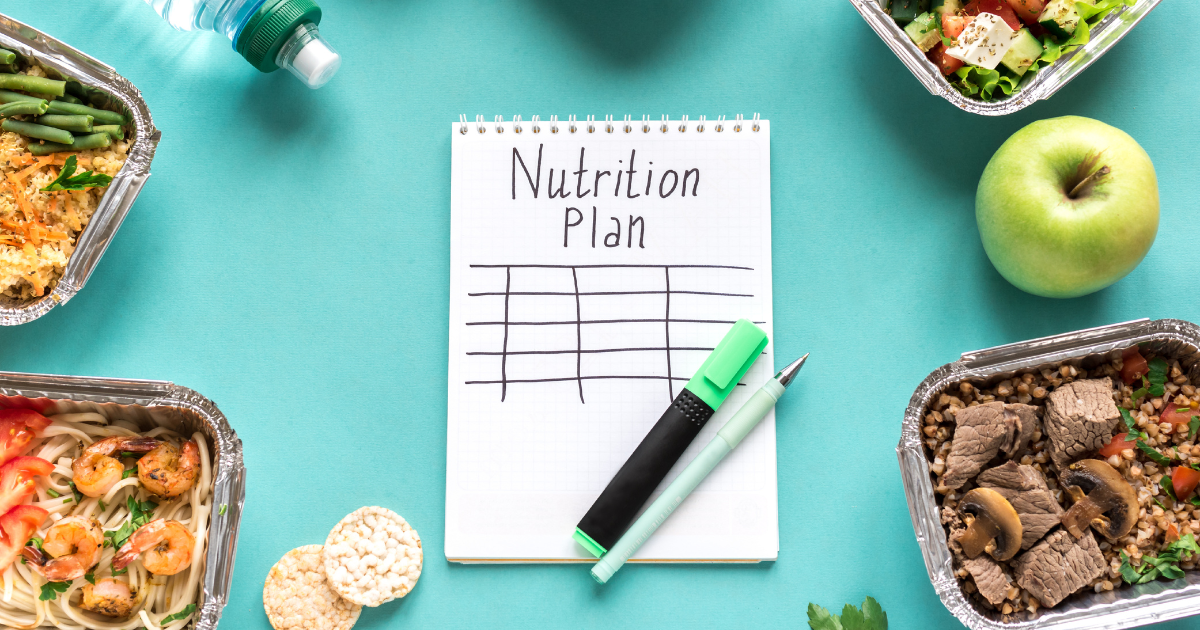
by Amy Plano | Jan 5, 2024 | General Nutrition
Are you looking for a celiac diet plan? As someone with celiac disease, you have to adhere to a life-long gluten-free diet.
Eating gluten-free can feel restrictive and overwhelming. However, you can still eat delicious foods while being completely gluten-free!
In today’s article, I will share a 5-day celiac menu plan that is both nutritious and delicious. You can use this menu as a great starting point for creating your own celiac diet plan.
Keep reading to learn more and make sure to save this post to reference later!
Do you struggle with prediabetes on top of celiac disease? If so- check out this article on how to eat if you’re prediabetic.
What is a Celiac Diet Plan?
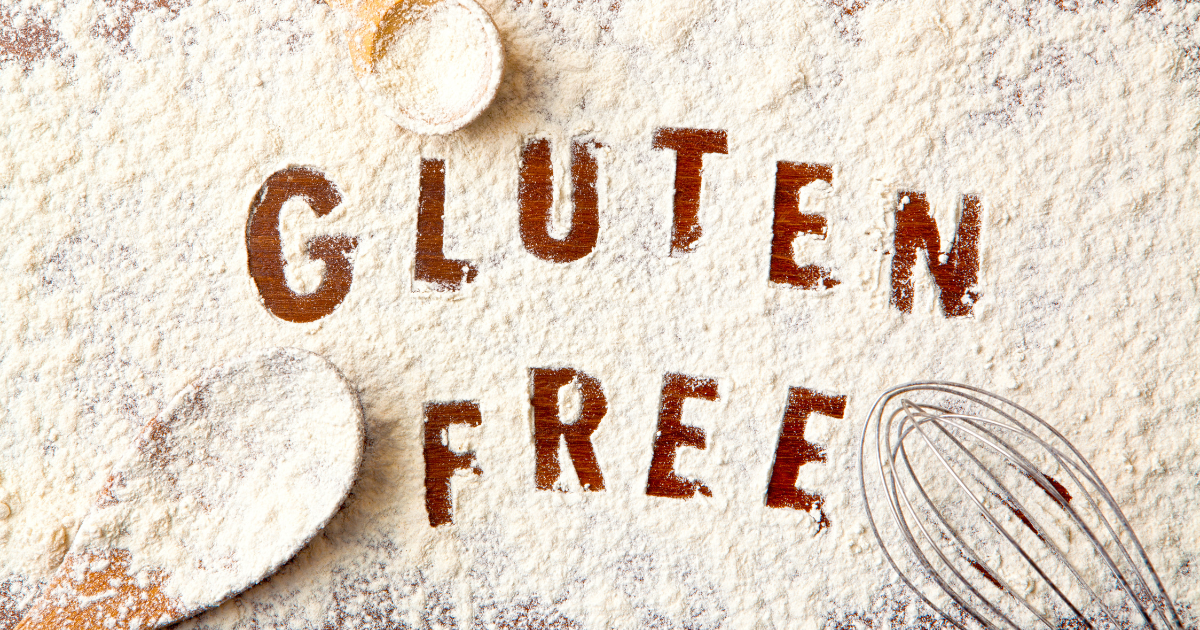 A celiac diet plan is a meal plan for someone with celiac disease. Patients with celiac disease must avoid gluten, the protein in wheat, barley, and rye.
Creating a diet plan can help patients with celiac stay on track with their health goals and ensure they’re eating the right balance of nutrients.
Without a diet plan, you may be tempted to eat unhealthy foods that could lead to unwanted weight gain and other health concerns.
Further, patients with celiac are at a greater risk for nutrient deficiencies due to digestive tract damage. Because of this, you’ll want to eat a diet primarily of nutrient-dense, whole foods.
A celiac diet plan is a meal plan for someone with celiac disease. Patients with celiac disease must avoid gluten, the protein in wheat, barley, and rye.
Creating a diet plan can help patients with celiac stay on track with their health goals and ensure they’re eating the right balance of nutrients.
Without a diet plan, you may be tempted to eat unhealthy foods that could lead to unwanted weight gain and other health concerns.
Further, patients with celiac are at a greater risk for nutrient deficiencies due to digestive tract damage. Because of this, you’ll want to eat a diet primarily of nutrient-dense, whole foods.
How to Make a Celiac Diet Plan
When creating your celiac diet plan, it’s essential to create a balanced plan highlighting the major food groups. This will help ensure you get the proper nutrients needed to thrive on a gluten-free diet.
The primary food groups include carbohydrates, lean protein, and healthy fats. For a complete list of celiac-approved foods, check out this blog!
Additionally, you’ll want to remember other dietary restrictions and sensitivities you may have.
For example, people struggling with Irritable Bowel Syndrome (IBS) on top of celiac disease may be sensitive to other foods, such as dairy or foods high in FODMAPs.
After creating your meal plan, you can add the ingredients to a grocery list and post the meal plan somewhere you can see it daily, such as on your fridge.
Don’t be afraid to get creative in the kitchen with your menu! Gluten-free eating doesn’t have to be boring. Experiment with different flavors and foods to find what you like.
If designing a celiac diet plan feels overwhelming, book an appointment with a registered dietitian (like me!) who can help you create a plan that’s right for you.
5-Day Gluten-Free Menu
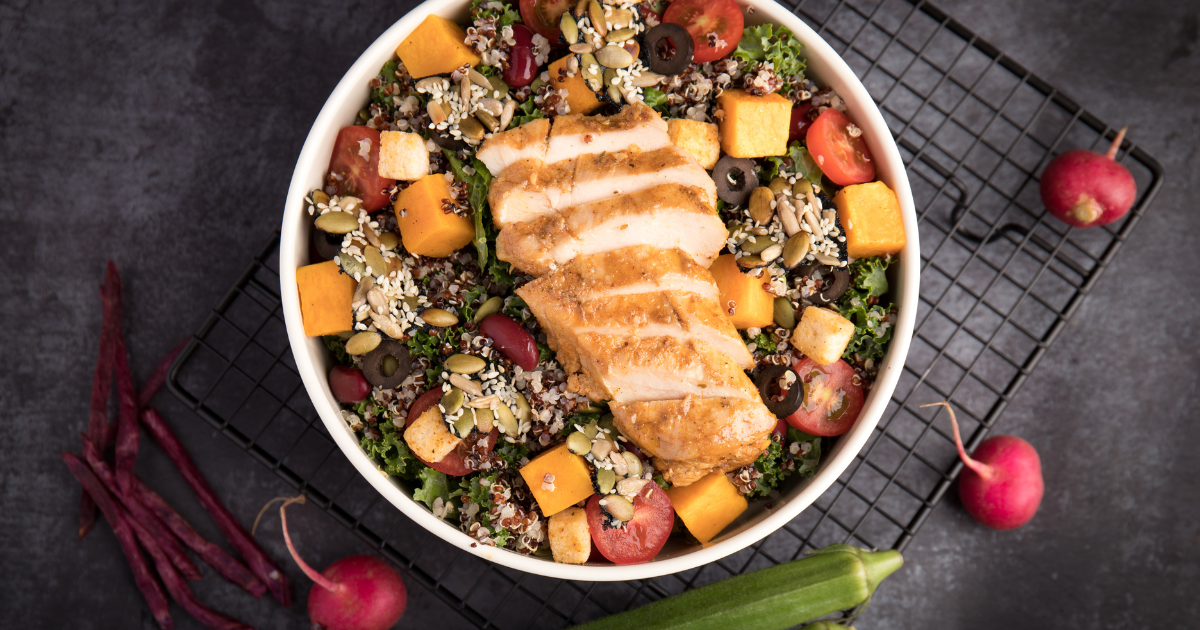 Feel free to modify this menu based on your dietary preferences and restrictions.
Feel free to modify this menu based on your dietary preferences and restrictions.
Day #1
Breakfast: Egg Bites, Gluten-Free Toast, and Fruit Salad
- Egg bites made with scrambled egg, spinach, and red pepper with a slice of gluten-free toast.
- Side of chopped fruit salad.
Lunch: Grilled Chicken Salad
- Grilled chicken salad with mixed greens, cherry tomatoes, cucumber, avocado, olives, and a homemade olive oil and lemon dressing.
Snack: Veggies and Hummus
- Cut up vegetables such as carrots and celery with a side of hummus.
Dinner: Quinoa and Vegetable Stir-Fry
- Quinoa and vegetable stir-fry with tofu or grilled shrimp.
- Steamed broccoli on the side.
Dessert: Strawberry Yogurt Bark
In a large pan with parchment paper lined on it, spread out the following mixture of ingredients onto it and place in the freezer:
- 3 cups whole milk plain Greek yogurt
- ¼ cup pure maple syrup
- 1 tsp vanilla extract
- ½ cup sliced strawberries
- Cut into pieces or crack when frozen.
Day #2
Breakfast: Chia Seed Pudding and Fruit
- Chia seed pudding made with almond milk, topped with sliced strawberries (or other fruit of choice), and coconut flakes or gluten-free granola.
- A side of turkey sausage or bacon (ensure it’s gluten-free).
Lunch: Lentil and Vegetable Soup
- Lentil and vegetable soup (ensure all ingredients are gluten-free).
- Gluten-free crackers on the side.
Snack: Avocado Rice Cakes
- Wild rice cakes topped with mashed avocado and red pepper flakes.
Dinner: Grilled Salmon and Veggies
- Grilled salmon with roasted sweet potatoes and green beans.
Dessert: Leftover Strawberry Bark
- Leftover strawberry bark.
Day #3
Breakfast: Mixed Berry Smoothie Bowl
- Smoothie bowl made with mixed berries, spinach, almond milk, and topped with gluten-free granola and sliced banana.
Lunch: Fish Tacos
- Grilled white fish with cabbage mix and corn tortillas.
- Side of brown rice and black beans.
Snack: Homemade Trail Mix
- Homemade trail mix with nuts and dried fruit.
Dinner: Cauliflower Pizza
- 2 slices of cauliflower pizza.
- Side salad with homemade lemon vinegarette.
Dessert: Stuffed Date Bites
- Dates stuffed with almond or peanut butter, topped with sea salt and coconut flakes.
Day #4
Breakfast: Avocado Toast
- Gluten-free toast topped with mashed avocado and poached eggs.
- A side of fresh fruit salad.
Lunch: Turkey Avocado Wrap
- Turkey, avocado, lettuce, and feta cheese wrapped in gluten-free tortillas.
- Side salad with a gluten-free vinaigrette dressing.
Snack: Peanut Butter Energy Balls
In a large bowl, combine the following together, mix, and roll into balls:
- 2 cups Rolled oats (must be labeled gluten-free!)
- 1 cup natural peanut butter or other favorite nut butter
- ½ cup honey
- ¼ cup mini chocolate chips
- ¼ cup unsweetened shredded coconut
Dinner: Steak and Potatoes
- Grilled steak with roasted potatoes and asparagus.
Dessert: Fruit Sorbet
- Your favorite fruit sorbet!
Day #5
Breakfast: Gluten-Free Pancakes
- Gluten-free pancakes made with almond flour (or you can use a pre-packaged mix), topped with maple syrup and fresh fruit.
- A side of scrambled eggs.
Lunch: Spinach and Goat Cheese Salad
- Spinach and goat cheese salad with walnuts, dried cranberries, and a balsamic vinaigrette.
- Grilled chicken or turkey breast on top.
Snack: Tropical Green Smoothie
- Frozen mango, kale, chia seeds, ½ banana, blended with almond milk.
- Optional: add vanilla protein powder of choice (double-check that it’s gluten-free).
Dinner: Chicken or Vegetable Curry
- Chicken or vegetable curry with coconut milk, served with gluten-free brown rice.
- Steamed green beans on the side.
Dessert: Leftover Energy Balls
- Leftover energy balls from yesterday!
Celiac Diet Plan: The Takeaway
I hope you can use this celiac diet plan as a guide for how to eat healthy with celiac disease.
Remember to incorporate a wide variety of whole foods to ensure you aren’t deficient in essential nutrients. Your diet doesn’t need to limit you!
If eating with celiac disease feels complex, I’m here to help! You don’t have to go through this alone.
Working with a registered dietitian to create a personalized menu and lifestyle plan can help you manage your condition and feel the best you’ve ever felt.
Schedule an appointment today to learn more about my nutrition counseling services. They may be 100% covered by your insurance company! Why wait when good health is right at your fingertips? Book a call today!
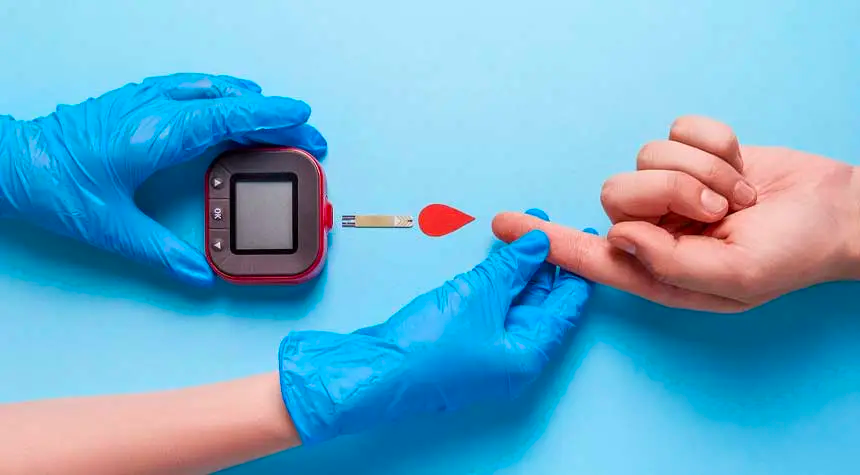
by Amy Plano | Nov 28, 2023 | General Nutrition
Are you wondering how should I eat if I am prediabetic?
If you have prediabetes, you may be curious about how your diet can help manage your blood sugar levels.
Without a doubt, prediabetes rates are on the rise, and your diet and lifestyle habits have a direct correlation with the condition.
Whether you have recently been diagnosed or want to understand more about maintaining optimal blood-glucose levels, these dietary recommendations can lead you in the right direction!
Can you reverse prediabetes with diet and exercise? Find out in my full blog post on the topic!
What is Prediabetes?
Prediabetes is a health condition where your blood sugar levels are higher than usual but not high enough to be classified as type 2 diabetes.
Prediabetes is the stage before type 2 diabetes. Because of this, there is an increased risk of developing type 2 diabetes, heart disease, and stroke.
To be diagnosed with prediabetes, you have either:
- Fasting blood glucose level ranging somewhere between 100-125 mg/dL
- A glucose level of 140 to 199 mg/dL measured 2 hours after a 75-g oral glucose load
- Glycated hemoglobin level (HbA1C) of 5.7% to 6.4% or 6.0% to 6.4%
Prediabetes is a warning sign that individuals should start implementing healthier lifestyles, dietary choices, and activity levels to prevent any further progression of type 2 diabetes.
That being said, diet and physical activity are first-line treatments for prediabetes!
Understanding Prediabetes
More specifically, prediabetes is “impaired glucose metabolism,” meaning the body has difficulty regulating glucose (blood sugar) levels to stay in the normal blood sugar range (below 100 mg/dL).
Next, prediabetes occurs because of insulin resistance and dysfunction of specific cells in your pancreas since these components are responsible for blood sugar regulation.
So, what does this mean? Let’s break it down.
- Insulin Resistance: Insulin is a hormone produced by the pancreas that is responsible for the adequate regulation of blood glucose by absorbing glucose from the bloodstream. In prediabetes, cells in the body become less responsive to the effects of insulin, so large concentrations of glucose continue to stay in the bloodstream. Even more, insulin resistance leads to type 2 diabetes.
- Pancreatic Beta Cells: The pancreas contains cells called “pancreatic beta cells.” These cells are responsible for producing insulin. For example, if these beta cells do not function properly, there could be low insulin levels and heightened blood glucose levels.
Further, the combination of insulin resistance and beta cell issues can lead to prediabetes.
You may be wondering, what can lead to insulin resistance?
- Genetics: Insulin resistance can be genetic, making someone more susceptible to prediabetes from birth, even with healthy lifestyle habits.
- Physical Inactivity: Physical activity supports insulin sensitivity and glucose metabolism. A lack of physical activity is a significant risk factor for insulin resistance.
- Dietary Choices: Next, diets contributing to inflammation and obesity are risk factors for prediabetes. Food choices high in refined carbohydrates, sugars, saturated fats, high-fat meats, and processed foods can lead to insulin resistance. Further, the diet is a lifestyle intervention that plays a crucial role in prediabetes.
- Aging: Over time, insulin resistance naturally begins to occur. Other factors like diet and exercise status can progress this natural occurrence.
- Obesity: Obesity is a major risk factor for prediabetes, as excess fat correlates with insulin resistance. Fat, also called adipose tissue, releases adipokines, which can corrupt insulin’s glucose regulation.
How Should I Eat If I Am Prediabetic?
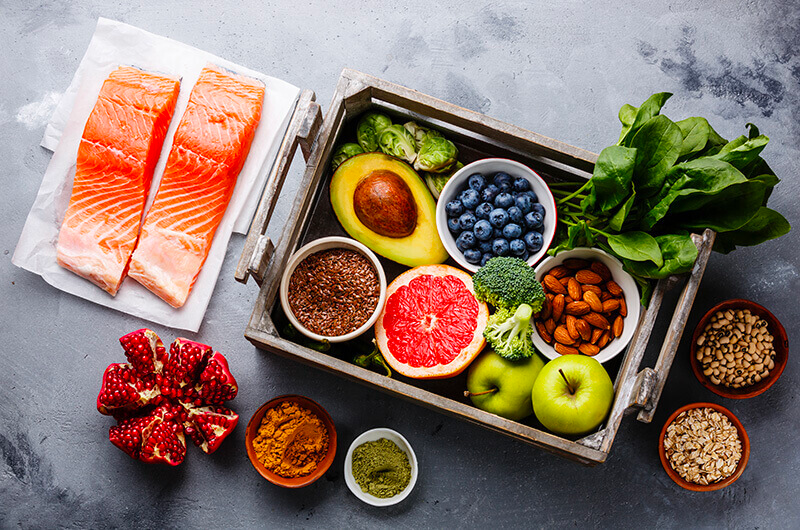
First off, healthy diet choices are crucial for managing prediabetes and reducing the risk of progressing to type 2 diabetes.
Here are some general dietary guidelines important for those with prediabetes:
Increase Intake of nutrient-dense foods like:
- Non-Starchy Vegetables
- Leafy greens
- Broccoli
- Cauliflower
- Brussels sprouts
- Bell peppers
- Cucumbers
- Tomatoes
- Whole Grains
- Quinoa
- Brown rice
- Oats
- Barley
- Lean Protein Sources
- Chicken, Turkey
- Fish
- Lean cuts of beef or pork
- Tofu and tempeh
- Legumes (lentils, chickpeas, and black beans)
- Healthy Fats
- Avocados
- Nuts & seeds
- Fish
- Fruit
- Dairy or dairy alternatives
- Skim or low-fat milk
- Soy milk
- Almond milk
- Water: continue to stay well-hydrated with non-sugar drinks like water, infused water, or herbal teas.
- Increase high-fiber foods
- Lentils
- Chia seeds
- Flax seeds
- Whole fruits and vegetables
Foods to limit with prediabetes:
- Refined carbohydrates
- White bread
- White rice
- Cereals
- Pastries
- Sugary foods and beverages
- Processed and pre-packaged foods
- High-fat meats: high-fat meats are generally high in added sugars, refined carbohydrates, sodium, and saturated fats.
- Packaged snack foods
- Fast-food meals
- Instant noodles or pre-packaged noodles
- Sugary beverages
- Excessive alcohol intake
Furthermore, keeping track of what works best for you is essential, too!
How Do I Prevent Blood Sugar Spikes?
Here are a few dietary tips that may help monitor glucose spikes:
Dietitian Tip #1:
Skipping meals may cause unstable blood-glucose levels.
Stay on a semi-structured eating pattern to support regular eating habits for blood sugar control. This schedule can be personal and unique to you. Additionally, keeping a food journal can allow you to create the best meal schedule for you!
Dietitian Tip #2:
Portion control can aid in regulating blood sugar levels by being mindful of how much food you eat during meals or snacking.
If you want to control portions, it is crucial to be mindful of hunger cues, have balanced portion sizes, and decrease overeating.
Even further, overeating can cause immense glucose spikes, leading to even greater insulin sensitivity or more complicated health concerns.
Avoiding distractions while eating can help you to stay more mindful of feelings of fullness or satiety.
Professional Support for Managing Prediabetes

Having personalized care from a healthcare professional can make a massive difference in blood-glucose management!
Primary care physicians and registered dietitians help those with prediabetes find the best plan in prediabetes care.
In addition, meal plans, lifestyle modification goals like diet and exercise habits, and medications are some examples of how healthcare professionals can support those with prediabetes.
Have more questions about prediabetes, prevention, and access to nutrition support?
Head over to my services page to learn more about my 1:1 premium nutrition services with an expert diabetes dietitian to make prediabetes management less stressful!
Lastly, your visit may be 100% covered by your insurance. That’s right- you can see me for little to no payment on your part. Find out more here!
How Should I Eat If I Am Prediabetic: Takeaways
Overall, lifestyle modifications, including keeping a healthy diet, having regular exercise, and appropriate weight management techniques as needed, are crucial for preventing and managing insulin resistance.
I hope this article answers your question about how should I eat if I am prediabetic.
For someone with prediabetes, whole grains, non-starchy vegetables, whole fruits, healthy fats, lean proteins, fish, and legumes are great dietary choices for blood-sugar maintenance and care.
Remember, food is medicine! Working with a healthcare professional such as a registered dietitian near you can ensure optimal strategies are being implemented for unique and personal care.
All in all, prediabetes is absolutely manageable with support and personal dedication to healthier lifestyle habits.

by Amy Plano | Nov 6, 2023 | General Nutrition
Can Celiac Disease cause weight gain? Let’s find out.
Celiac disease is a gastrointestinal (GI) disease with rising rates of diagnosis. If you have Celiac, you may feel overwhelmed and confused with your diet and how to make sure you’re supporting your body correctly.
The only natural and effective treatment for Celiac is to be on a strict exclusion of gluten for life or a gluten-free diet (GFD).
Even though a GFD is a super effective and safe treatment, it often poses lots of challenges in day-to-day life and can contribute to mental and physical health concerns.
Not to mention that depending on the age of diagnosis and other medical conditions, patients with Celiac can suffer from GI symptoms, nutrient deficiencies, and unwanted weight gain.
In today’s article, I will discuss the question, Can celiac disease cause weight gain? Keep reading for a registered dietitian’s perspective on this topic.
What is Celiac Disease?
Celiac Disease is an autoimmune condition where the consumption of gluten, a protein found in wheat, barley, and rye, is the main trigger.
If someone with Celiac consumes gluten, their immune system attacks the lining of the small intestine, which can lead to severe inflammation and damage.
What damage can happen?
Since the stomach finds gluten a “foreign invader”, the body’s immune system will begin producing antibodies to fight this invader.
In the process of fighting the gluten, other healthy bodily cells in the small intestine called “villi” are affected.
The villi are responsible for adequate nutrient absorption; thus, malabsorption of essential nutrients can be a concern for Celiac patients.
How is Celiac Disease Diagnosed?
Though Celiac rates are rising, there are still many individuals with Celiac Disease who are undiagnosed.
Celiac can affect individuals in different ways and at different points in their life. Some begin to have symptoms as children, while others only as adults.
Symptoms vary from individual to individual, but some common symptoms of Celiac include:
- Constant chronic diarrhea or constipation
- Weight loss
- Gas
- Unexplained low blood count (anemia) and feelings of fatigue due to this
- Infertility
- Early osteoporosis of fractures
- Stomach pain or bloating consistently
- Painful, itchy skin rash
- Muscle cramps, bone pain
Celiac Disease is not the easiest to diagnose since many of the common symptoms can be symptoms for other diseases like Crohn’s, IBS, or intestinal infections.
A blood test is available for Celiac to see if particular antibodies are present in the blood. These antibodies would be present if the individual consumes gluten and the immune system elicits antibodies to respond to the invader.
For most children and adults, the best test to take as step one is the Tissue Transglutaminase IgA antibody (tTG-IgA) Test.
All Celiac testing requires the individual to eat gluten for some time before the test for there to be antibodies present from the autoimmune response.
- IgA Endomysial antibody (EMA): This test is the most specific test for Celiac, but it is not as sensitive as the tTG-IgA test.
- Total Serum IgA: A false negative tTG-IgA or a false EMA test is possible if you are someone with an IgA deficiency, and this is the test that is utilized for this situation.
- Deamidates gliadin peptide (DGP IgA and IgG): This screening type is to test further for Celiac in individuals with IgA deficiency (this affects 2-3% of patients with Celiac or those who test negative falsely for tTg or EMA).
- Video capsule endoscopy (VCE): This method is used more primarily with complications linked with Celiac.
- Intestinal fatty acid binding protein (I-FABP): If there is any damage in the small intestine, this binding protein could indicate unintentional gluten intake.
- Genetic Testing: Celiac disease is highly genetic, thus genetic testing can be done to indicate whether specific genes are present which are associated with Celiac.
What are the Symptoms of Celiac Disease?
Common symptoms to be on the look out for:
- Constant chronic diarrhea or constipation
- Weight loss or gain
- Gas
- Unexplained low blood count (anemia) and feelings of fatigue due to this
- Infertility
- Early osteoporosis of fractures
- Stomach pain or bloating consistently
- Painful, itchy skin rash
- Muscle cramps, bone pain
Can Celiac Disease Cause Weight Gain?
Weight gain is a common symptom of untreated Celiac due to severe malabsorption in your small intestine.
Your immune system starts to attack your intestinal villi. These are the guys are responsible for nutrient absorption. Once they get damaged, there is a lack of absorption of fats, proteins, carbohydrates, vitamins, and minerals.
But can Celiac disease cause weight gain?
At the beginning of a diagnosis, weight loss can actually occur because the small intestine needs to heal from the damage.
However, when the small intestine is finally more healed, weight normalization or weight gain may occur.
If your weight gain continues, other health concerns like heart disease or high blood pressure could be a concern.
Another reason for weight gain is that people often turn to “gluten-free junk foods” instead of fresh and non-processed gluten-free options.
Processed gluten-free foods can still be high in sugar, fat, and calories. With the increased awareness of Celiac, more healthy options are becoming readily available to the public. Which is amazing!
Speaking with a registered dietitian regarding any weight gain concerns could help determine further treatment strategies.
For healthful gluten-free snacks and meal examples that can help with increased weight gain, keep reading!
Diet + Lifestyle With Celiac
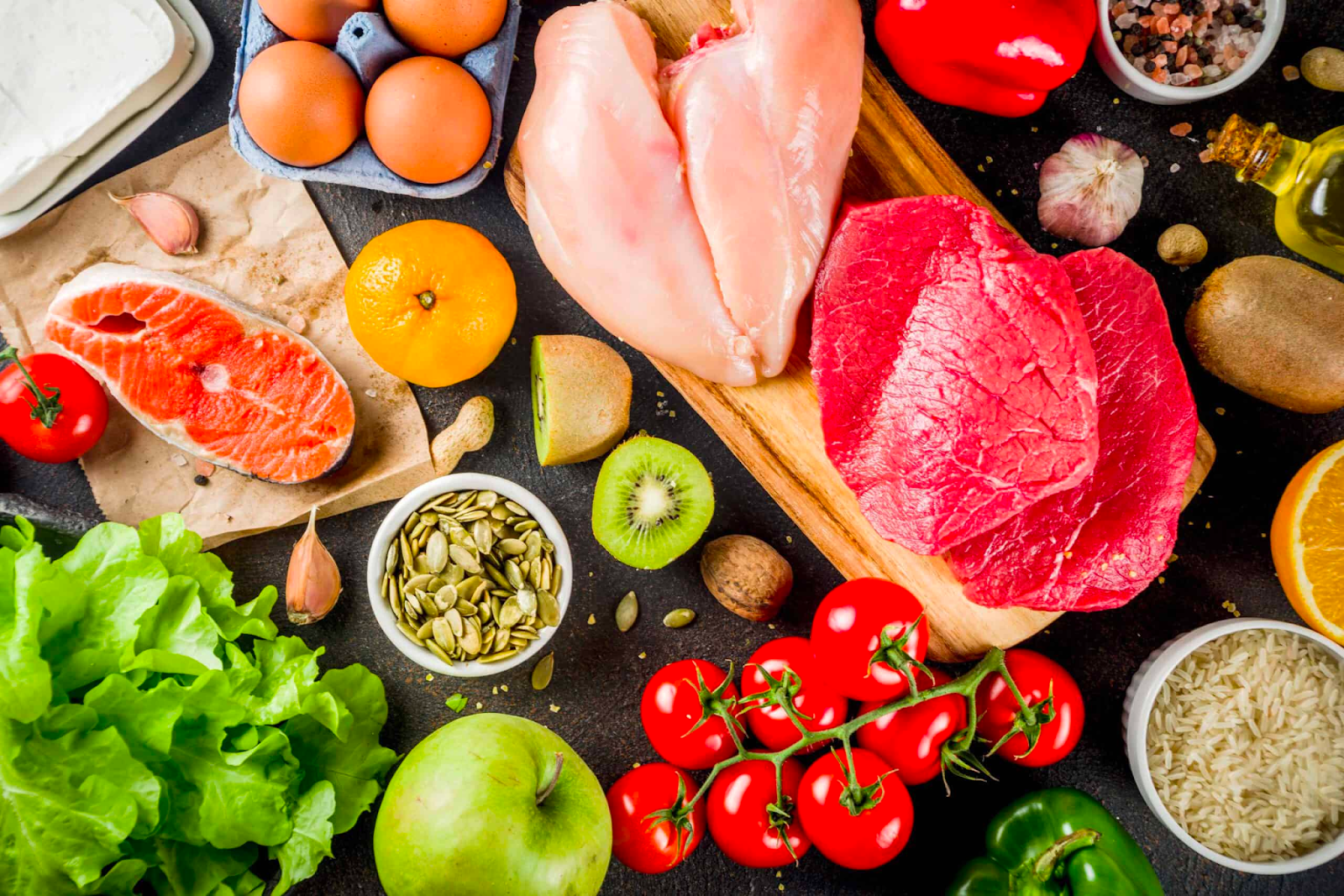
Living with Celiac Disease can present lots of challenges like having to give up tasty foods, reducing the risk of potential cross-contamination, uncovering hidden sources of gluten, and having frustrating social dining experiences.
Giving up gluten is HARD- trust me, I understand. Having to give up foods like bread, cake, beer, cereals, fries, and pasta is no easy feat. But, having a fulfilling life with tasty gluten-free foods is very possible with Celiac, I can assure you!
So, what are gluten-free fresh food options that are a part of a healthy diet and can support weight loss?
- Fruits and vegetables
- Beans, seeds, legumes, and nuts in their unprocessed forms
- Eggs
- Lean and unprocessed meats, fish, and poultry
- Most low-fat dairy products
- Grains like amaranth, buckwheat, flax, gluten-free flours (rice, soy, corn, potato, bean), quinoa, and rice.
The best combination for a GFD is naturally gluten-free foods and certified processed gluten-free products.
It is important to note that when you are buying processed foods, you need to make sure to read the labels to see if they include gluten-free on the label, according to the U.S. Food and Drug Association (FDA).
What foods to avoid (unless any of these are ever labeled gluten-free via the FDA):
- Foods with wheat, barley, and rye
- Beer, ale, porter
- Breads
- Bulgar wheat
- Cakes and pies
- Candies
- Cereals
- cookies /crackers
- Pastas
- French fries
- Croutons
- Salad dressings
- Soups and soup mixes
- Hot dogs and other unprocessed meats
- Some prescription and over-the-counter medications may use wheat or gluten, so discussing with your doctor and pharmacist about your gluten-free needs is recommended.
Not eating gluten is necessary to treat Celiac in addition to avoiding cross-contamination at home and in restaurants.
To ensure cross-contamination does not occur, store your gluten-free products in a different area from products and foods containing gluten and clean surfaces very often.
For example, you can purchase a separate toaster for cooking gluten-free bread or perhaps utilize the oven instead.
If you are worried about cross-contamination at a restaurant, mention to your waitress about your condition so that extra precautions can be taken into consideration in the kitchen.
Healthy Meal and Snack Ideas for Celiacs
Are you worried you won’t be able to enjoy tasty food again as a Celiac?
Don’t worry, here are some fantastic ideas to add to your routine to relieve the sweet or savory tooth!
Snack Ideas:
Peanut Butter Energy Balls (you can alter this recipe to fit different flavors!)
In a large bowl, combine the following together, mix, and roll into balls:
- 2 cups Rolled oats (must be labeled gluten-free!)
- 1 cup natural peanut butter or other favorite nut butter
- ½ cup honey
- ¼ cup mini chocolate chips
- ¼ cup unsweetened shredded coconut
Strawberry Greek Yogurt Bark
In a large pan with parchment paper lined on it, spread out the following mixture of ingredients onto it and place in the freezer:
- 3 cups whole milk plain Greek yogurt
- ¼ cup pure maple syrup
- 1 tsp vanilla extract
- ½ cup sliced strawberries
Cut into pieces or crack when frozen.
Easy gluten-free meal options:
- Stuffed Peppers (saw delish for inspiration)
What you need:
- ½ cup uncooked white or brown rice
- 2 tbsp. Extra virgin olive oil
- 1 medium yellow onion, chopped
- 3 cloves garlic, finely chopped
- 2 tbsp tomato paste
- 1lb ground beef (can use other meats for this recipe as well)
- 1.5 tsp dried oregano
- Salt and pepper to taste
- 6 bell peppers (remove the tips and cores
- 1 cup shredded Monterey jack cheese (or desired cheese)
- Chopped parsley
How to:
- Preheat the oven to 400 degrees, and in a small saucepan, prepare rice according to the instructions.
- In a large saucepan, heat up olive oil and add in the onion. Cook the onion until soft. Add the garlic with tomato paste and stir. Immediately add the beef and stir with a wooden spoon.
- Stir in the cooked rice and tomatoes with the spices. Stir occasionally for 5-1- minutes.
- On a baking pan, line the bell peppers on a baking pan and fill with the beef mix. Top the peppers with desired cheese.
- Cover the dish with foil and bake the peppers for 35 minutes.
- Top with parsley for extra flavor and color!
Cauliflower Pizza
What you need :
- 1 large head of cauliflower (chopped and steamed)
- 1 egg
- 2 cups shredded cheese
- ½ cup freshly grated parmesan cheese
- ½ cup marinara
- 2 cloves garlic
- 1 cup cherry tomatoes chopped into halves
- Fresh basil and balsamic glaze
How to:
- Preheat the oven to 425 degrees
- To make the cauliflower crust, combine steam cauliflower in a food processor. Drain the water from this and add the drained cauliflower to the bowl
- Smash the cauliflower in the bowl, and add your egg, mozzarella cheese, parmesan, salt and pepper
- Using a 9×13 inch pan, spray cooking oil and shape the cauliflower mixture into a large circle
- Place the crust in the oven on 425 degrees and bake for 20 minutes
- Take the pizza out and spread the marinara around the crust
- Add more mozzarella, garlic, tomatoes, and parmesan, and bake for ten more minutes
- Take the pizza out, add basil, and then drizzle the balsamic glaze for even more taste!
- Enjoy
The Takeaways
Celiac Disease is an autoimmune condition where gluten is the primary trigger, a protein found in wheat, barley, and rye.
I know this may seem a bit overwhelming- living with Celiac has challenges due to not being able to eat gluten.
But, with a diet and lifestyle plan in place that works best for you, Celiac is manageable!
Be sure to try some gluten-free snacks and meals I mentioned above to understand how tasty gluten-free food can be.
Working with a Dietitian can make this transition to a gluten-free diet smooth and less stressful.
If you want more information on managing celiac disease, head over to my services page to learn more about my 1:1 premium nutrition services. I can help you take charge of your health and prevent unwanted weight gain with Celiac disease.
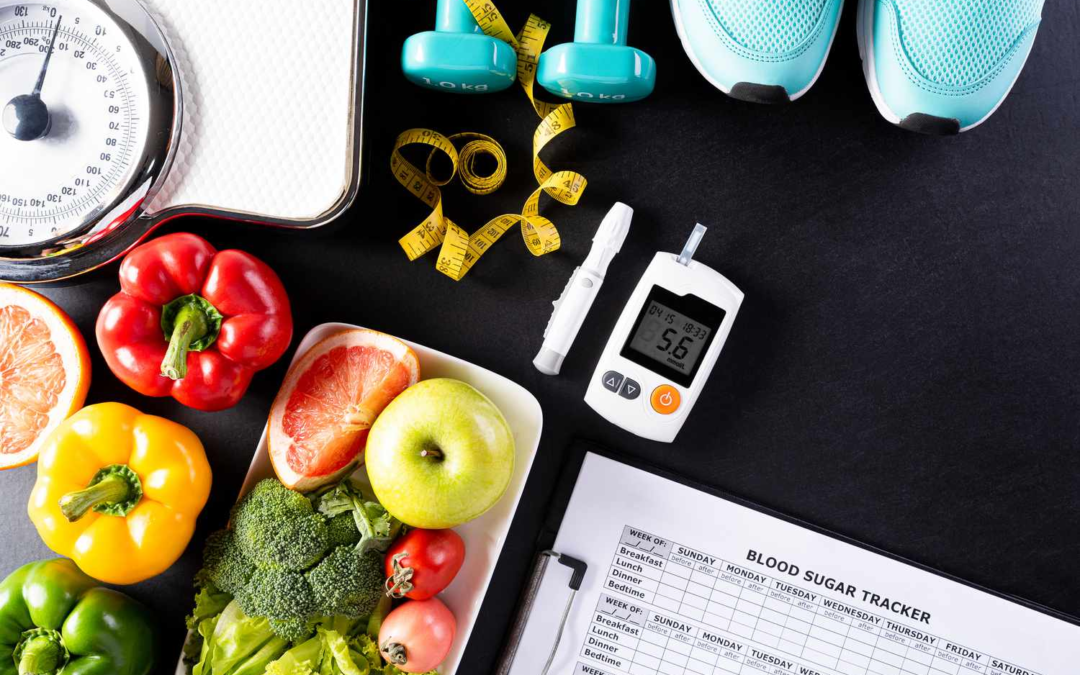
by Amy Plano | Oct 1, 2023 | General Nutrition
Are you wondering why weight loss with diabetes?
Diabetes rates are rapidly increasing throughout the United States, with an astounding increase to approximately 37.3 million, or 11.3% of the U.S. population, diagnosed nationwide.
It is likely that you or someone you know is dealing with diabetes. The condition can be overwhelming and frustrating, leading to unwanted symptoms such as weight gain.
With the right diet and lifestyle habits, you can promote sustainable weight loss and keep your diabetes under control.
In today’s article, I will be discussing the risk factors for diabetes, the different types of diabetes, and what habits you can implement to lose weight effectively. Keep reading to learn more!
If you haven’t already, make sure to check out my blog on how to reverse prediabetes with diet and exercise!
Why is Diabetes on the Rise?
There are many factors which contribute to the rise in diabetes rates. Some include but are not limited to:
- Lifestyle Changes: Dietary and fitness habits have altered due to increases in sedentary lifestyle and remote jobs.
- Aging Population: Diabetes largely affects older adults, and with a current large population of aging adults, the rates inevitably increase.
- Genetics: Genetic mutations that alter insulin affectability can be a factor in the diagnosis.
- Environmental Factors: Though not many people know this, factors such as chemicals, pollutants, and even developmental infrastructure (access to nutritional food options and local produce) can affect rates for diabetes.
- Improvements in Screening and Diagnosis: Medical advances allow screening and diagnosis to be more effective, and thus, more people will be accurately assessed for diabetes.
- Access to Healthcare: Lack of access to healthcare can lead to late diagnoses.
- Lack of Education: Lack of nutrition education and emphasis on the importance of physical movement for at least 30 minutes a day can increase rates of diabetes.
More in particular, diabetes rates are on the rise in correlation with an increase in the number of people who are overweight. This correlation strongly suggests that weight loss is an important step in healing and improving insulin resistance!
What is Diabetes?
Diabetes is a chronic (or long-lasting) health condition that affects how your body is able to turn food into energy.
Diabetes is characterized by heightened levels of blood glucose (sugar) in the body. There are elevated levels of insulin in the body when our pancreas does two things. It either does not produce enough insulin (a hormone responsible for regulating blood sugar) or cannot utilize the insulin effectively.
Without enough insulin or insulin responsiveness in the body, glucose (blood sugar) from food is not shuttled into our muscle, fat, and liver cells.
Blood glucose, instead, will just build up and heighten blood glucose levels, which is not beneficial to our health and longevity.
There are two types of Diabetes:
Type I Diabetes: Type I, or Juvenile Diabetes, is an autoimmune disease. Essentially, the body’s immune system mistakenly attacks the insulin-producing beta cells, leaving the body with no insulin. Without insulin, blood glucose is not adequately regulated.
Age of Onset: Usually, children, adolescents, and younger adults are diagnosed with Type I. Type I can be diagnosed at any age, however.
Insulin Dependency: People with Type I Diabetes need lifelong insulin therapy in order to regulate blood sugar levels. They would use insulin pumps or insulin injections for regulation.
Type II Diabetes: Type II Diabetes is insulin resistance, as the pancreas produces insulin, but the body does not recognize that it is there and thus is not being used effectively to regulate blood sugar levels.
Age of Onset: Typically, those diagnosed with Type II Diabetes are adults, but more children are being diagnosed with Type II due to rates of obesity continuously rising.
Insulin Dependence: Some individuals will require oral medication or insulin injections, but since Type II Diabetes can be reversed, treatment is different from Type I. Next, in Type II, lifestyle modifications such as increased exercise and or dietary changes are highly beneficial. They are of utmost importance in further escalation of the condition.
What is the Connection Between Weight Loss and Diabetes

Exercise is usually recommended to live a healthy lifestyle for any individual. However, those diagnosed with Prediabetes or Type II diabetes can benefit significantly from lifestyle modifications. Modifications may include adequate exercise, healthy weight loss, and changes in dietary choices.
Additionally, weight loss is a common treatment plan for those diagnosed with Type II Diabetes. This is especially true if they are overweight or considered obese according to BMI standards.
In fact, weight loss via lifestyle modifications is the first-line therapy for Type II diabetes!
So… Why Weight Loss with Diabetes?
You may be wondering why weight loss with diabetes?
Here are some reasons why weight loss is beneficial to managing, preventing onset, or reversing Type II Diabetes:
- Helps Manage Blood Sugar Levels: Getting active makes your body more sensitive to insulin, which can help someone diagnosed with Type II diabetes regulate blood sugar levels. Remember, the goal in reversing Type II is to allow your body to be more insulin sensitive, or in other words, be able to recognize insulin is present and thus utilize it effectively!
- Lowers Risk of Other Health Complications or Diagnosis: Weight loss can reduce one’s risk of having correlating conditions with Type II diabetes, such as heart disease, stroke, and kidney complications. Excess body weight is associated with a heightened risk of cardiometabolic complications. Further, this may lead to or escalate Type II diabetes.
- Improved Energy Levels: Individuals consistently exercising and eating more nutrient-dense foods tend to have improved levels of energy, which will continue to be a motivating factor in regular exercise or frequent movement.
- Reduction of Excess Fat: If there is an increase in circulating blood sugar, the sugar is stored as fat. Excess fat builds in the liver due to a sedentary lifestyle, lack of exercise, and or dietary inadequacy. If this happens, the body lacks sensitivity to insulin. Then, this can lead to rises in blood glucose levels! Studies, therefore, have consistently shown excess fat in the liver and pancreas are huge factors in the onset of Type II diabetes.
Weight Fluctuations and Diabetes
Some individuals with diabetes struggle with consistent weight fluctuations.
The most common treatment for diabetes beyond lifestyle modifications is insulin modifications or injections. These, unfortunately, often cause weight fluctuations.
Even further, individuals taking insulin may gain weight. In a population where weight loss is beneficial, this cycle can be very frustrating.
The good news is there are ways to manage weight fluctuations while on insulin!
- Stay physically active! Movement is going to be beneficial to your health by aiding the effectiveness of your insulin hormones to regulate your blood sugar levels. You can always adjust workout regimens or types of movement depending on what feels good to YOU.
- Don’t skip meals. If you skip meals, your blood sugar will drop significantly and then significantly rise the next meal you ingest. Stay on a consistent dietary routine to allow your body to adjust to blood sugar levels.
- Talk with your provider (PCP or Dietitian) about medications. Do not increase or reduce your insulin in order to stop weight loss or weight gain. Take insulin as directed, but feel free to discuss possible changes in medications with your providers.
A lot of information, I know. However, the most important thing to keep in mind is that weight loss is not a magical cure for diabetes, and health improvements from it may take time to surface.
Additionally, FAD Diets (a dietary plan that supposedly gives immediate positive results) are not long-term solutions for weight loss since most fad diets are not maintainable.
Think about long-term, maintainable lifestyle changes you can make that work well for your routine and allow you to manage your diabetes and overall health.
5 Tips to Support Sustainable Weight Loss

Every individual is different in terms of what routines or lifestyle modifications can work best for them.
Below are a few ideas on how you can begin making a sustainable weight loss regimen:
- Meal prep nutritious foods in advance. Having to cook every meal one at a time on a daily basis can be difficult to maintain throughout the week. By meal-prepping in advance, eating healthy can be easier! Find nutrient-dense, low glycemic index foods to integrate into your weekly dietary routine. Then, prepare snacks and meals with these foods before the week begins.
- Increase your daily steps. If you have a break in the day, getting outside for a quick walk can help increase activity levels as well as give a mental refresh.
- Manage stress levels, as stress is associated with weight gain. Stress causes our bodies to produce and elicit a hormone called cortisol. Cortisol, when released, urges our body to replenish energy stores by eating more! Thus, stress can cause weight gain. Some ways to manage stress and decrease vulnerability to weight gain include journaling, Yoga, meditation, going on walks, painting or drawing, having a self-care night, getting together with friends, etc.
- Prioritize high-volume, low-calorie foods. Fruits and vegetables are great examples of foods to integrate more of! Examples include cucumbers, watermelon, greens, and whole-grain items like quinoa and brown rice.
- Try keeping a food journal. By keeping track of the foods you eat throughout the day, you can have greater control over changing habits that contribute to weight gain. Further, being in a calorie deficit is an important part of weight loss. Tracking calories will make weight loss an easier goal to meet.
Why Weight Loss With Diabetes: The Takeaways
All in all, this information may feel a little overwhelming to you, but focusing on the key points made can hopefully help pull it all together!
Diabetes is a chronic (or long-lasting) health condition that affects how your body is able to turn food into energy.
There are two types of diabetes: Type I and Type II Diabetes.
- Type I is an autoimmune disease typically resulting from genetic or environmental factors and diagnosed at a younger age.
- Type II Diabetes is typically a result of inadequate exercise and lifestyle routines or dietary patterns and is usually diagnosed in adults. Remember, the goal in reversing Type II is to allow your body to be more insulin-sensitive. In other words, be able to recognize insulin is present and thus utilize it effectively. Further, every person is different in terms of what routines are sustainable for healthy weight loss. Some tips for maintainable weight loss include:
- Meal prep nutritious foods in advance.
- Increase your daily steps.
- Manage stress levels, as stress is associated with weight gain.
- Prioritize high-volume, low-calorie foods.
- Try keeping a food journal.
Overall, you know your body best, and by speaking with your care providers, you can create an individualized approach for a healthier life.
If you want more information on how to manage diabetes or prevent the onset of Type II diabetes, head over to my services page to learn about my 1:1 premium nutrition counseling services! There is no better time to invest in you and your health.

by Amy Plano | Sep 11, 2023 | General Nutrition
Have you been diagnosed with irritable bowel syndrome (IBS) or feel like you may have IBS? If so, you may be curious about what foods trigger IBS.
Understanding how diet affects IBS symptoms can help you regulate your abdominal discomfort and your overall health!
Trust me, I know that IBS can be an extremely frustrating and overwhelming condition. The symptoms can start to greatly impact your quality of life and time with friends and family.
In today’s article, I will be diving into the basics of IBS, including symptoms and diagnosis criteria. Then, I will share my best tips for treating and managing IBS as a specialized dietitian.
Are you dealing with prediabetes or high blood sugar on top of gut health issues? If so, then make sure to check out my latest blog on how to reverse prediabetes with diet and exercise!
What is IBS?
Irritable Bowel Syndrome, or IBS, is a chronic functional gastrointestinal disorder that causes altered bowel states and abdominal discomfort or pain.
IBS affects approximately 20% of the general population, with women being twice as likely to report symptoms.
There are four different subtypes of IBS, depending on your symptoms:
- IBS with constipation (IBS-C)
- IBS with diarrhea (IBS-D)
- IBS with a combination of constipation and diarrhea
- Unclassified IBS
While IBS can significantly affect the quality of one’s life, the causes are still widely unknown. However, a large amount of research supports the connection between diet, mental health, lifestyle, and environmental factors with IBS.
As you can see, there’s absolutely hope for you and your management of the condition!
What are the Symptoms of IBS?
This is a tricky question because everyone has different experiences and discomforts with IBS. Symptoms of IBS can vary per individual, so efficient care is a very personalized approach!
Common symptoms of IBS can include but aren’t limited to:
- Abdominal pain & cramping
- Bloating
- Gas
- Altered GI function
- Constipation
- Diarrhea
- Both constipation and diarrhea
- Indigestion
- Nausea
- An urgent need to defecate
How is IBS Diagnosed?
There is no test to give a definitive diagnosis for IBS.
However, doctors will review symptoms and past medical history and complete a physical exam to ensure you don’t have Celiac disease or Inflammatory Bowel Disease (IBD), which both have similar symptoms.
If your tests come back negative for Celiac Disease or IBD, you will then likely be assessed for IBS criteria to determine a diagnosis.
- Rome Criteria
- Belly pain and discomfort at least once a week within the last three months
- The pain and discomfort follow with defecation, a change in frequency of defecation, and/or a change in stool consistency.
- Type of IBS
- IBS-C (constipation)
- IBS-D (diarrhea)
- Both constipation and diarrhea IBS
- Unclassified IBS
You may need to continue to receive additional testing and bloodwork before coming to a definitive diagnosis.
What Role Does the Gut-Brain Connection Play In IBS?

In order to understand IBS and truly get to the root of the problem, understanding key physiology features is very helpful.
One key component of IBS is the connection between your gut and brain, called the gut-brain axis.
Your autonomic nervous system (ANS) is responsible for involuntary processes like heart rate, blood pressure, respiration (breathing), digestion, bodily fluid production, and more. The ANS has three subgroups: parasympathetic nervous system, sympathetic nervous system, and enteric nervous system.
I want to focus on the enteric nervous system (ENS) since it plays such a vital role in digestion and intestinal function. The ENS contains a whole network of neurons that line the entire GI tract, extending all the way up to the esophagus and down to the anus.
Did you know the ENS is known as the “Second Brain” or the “Brain of the Gut”?
IBS is classified as a gut-brain interaction disorder because messages constantly go to and from the brain.
If any miscommunications are potentially due to anxiety or stress, your IBS symptoms can begin or worsen!
Now that you’re more of an expert on the symptoms and causes of IBS, let’s talk about how we can treat IBS and have a healthy and happy gut.
Treatment of IBS

Dietary changes are commonly made in order to reduce symptoms of IBS.
Since food triggers vary from person to person with IBS, identifying personal food triggers can be a series of trial and error.
How to identify your triggers:
- Keep a food journal! Write down what you eat during each meal, with a note on how you felt after. This can allow you to find common denominators and eliminate your triggers!
- Be aware of common triggers so you are better prepared to make connections through your food journal. Remember that depending on which subtype of IBS you have been diagnosed with, different foods will trigger you.
What Foods Trigger IBS?
Next, I will be discussing what foods trigger IBS.
It is always best to work with an IBS dietitian before completing any type of elimination protocol on your own!
Common Triggers for IBS-C (constipation-predominant)
- Breads and cereals made with refined grains
- Processed foods like cookies and cakes
- Coffee, alcohol, carbonated drinks
- Dairy products
If you have IBS-C, you should instead focus on INCREASING:
- Fiber: Fruits, vegetables, beans, lentils, and whole grains can help reduce gas and bloating and increase bowel motility.
- Water: Drink plenty of water! If your body recognizes it is dehydrated, it will try to retain as much water as possible, and thus, your stool will have a much harder consistency.
- Prune Juice: Trust me when I say that prune juice is your best friend during constipation! Prune juice is high in sorbitol and fiber, making it a natural laxative.
Common Triggers for IBS-D (diarrhea predominant)
- Too much fiber can cause diarrhea. There is fiber in the external skin of fruits like apples, prunes, kiwis, etc. Monitor how much your body can handle fiber since this is very individualized!
- Coffee, alcohol, carbonated drinks, any caffeinated drinks
- Fried and fatty foods
- Dairy products, especially for lactose-intolerant folks
- Foods with wheat, especially for people who are gluten-sensitive
If you have IBS-D, you should instead focus on :
- Eat a moderate amount of fiber. Soluble fiber is better for IBS-D symptoms. Soluble fiber options include oats, peas, beans, citrus fruits, etc.
- Try to drink water an hour before and an hour after your meals instead of during your meals.
- Stick to lean proteins like chicken or eggs
- Noodles, rice, and potatoes are a great option for neutral and diarrhea-safe foods!
Common IBS treatment options or strategies for most IBS patients include:
- Reduce Cruciferous Vegetables: Cruciferous vegetables include cabbage, broccoli, cauliflower, kale, bok choy, and collard greens. Cruciferous vegetables are high in sulfur and thus can increase IBS symptoms by increasing gas, bloating, and diarrhea.
- Try reducing very spicy foods. Some people are spice-sensitive and may have flare-ups as a result.
- Try to eat slower and more mindfully. Give your body the opportunity to digest at an adequate pace.
- Get more exercise to reduce stress, improve bowel function, and reduce bloating.
- Increase Omega-3 Fats: Omega-3s are great for brain health, which, as you now know, correlates with the gut! Foods rich in Omega-3s include fish, seafood, flaxseed, chia seed, and walnuts.
- Quality stress management – Have you ever had a “gut-wrenching” experience? Had “butterflies” in your stomach? Felt nauseous from a situation? These emotionally driven physical feelings are due to the brain’s direct effect on the stomach and intestines. It is also scientifically proven that the gut and brain connection is a two-way street, meaning a stressed gut can send signals to the brain and vice versa. Since the GI system and the brain are so intimately connected, stress-induced stimulation can cause symptom flare-ups in IBS!
Stress-management techniques like the ones listed below help maintain a healthy relationship between the gut and brain.
- Deep breathing exercises
- Yoga
- Adequate sleep
- Therapy
- Guided imagery exercises
- Do something fun as often as possible – read, hang out with friends, paint, color, shop, etc.
Should You Follow a Low-FODMAP Diet?
A low-FODMAP diet is another treatment option that is available for IBS patients.
“FODMAP” stands for Fermentable Oligosaccharides, Disaccharides, Monosaccharides, and Polyphenols. Some people are highly sensitive to high-FODMAP foods.
These short-chained carbohydrates don’t absorb well in the intestine and thus could potentially cause bloating and abdominal pain.
High-FODMAP Foods Include:
- Canned fruit
- Fruits such as apples, apricots, pears, plums, cherries, mangoes, watermelon
- Large consumption of fruit juices at one time
- Wheat and rye products
- Dairy products
- Honey and foods high in high-fructose corn syrup
- Cruciferous vegetables, artichokes, asparagus, beans, garlic, mushrooms, onion, snow peas
What Foods Trigger IBS: The Takeaways

I know this can be a lot to take in, as IBS is a very personalized diagnosis. Just know that the more you understand yourself and your triggers, the more you can regulate the discomfort.
Here you go for those wanting a summary of the key points we discussed!
There are four different subtypes of IBS, depending on your symptoms:
- IBS with constipation (IBS-C)
- IBS with diarrhea (IBS-D)
- IBS with a combination of constipation and diarrhea
- Unclassified IBS
Many individuals with IBS link their symptoms to dietary factors, making diet the central area of concern for symptom reduction. Identifying your food triggers is the first step. Next, eliminating triggers will alleviate the pain or discomfort.
How to identify your triggers:
- Keep a food journal!
- Be aware of common triggers so you are better prepared to make connections through your food journal.
Some dietitian-approved treatment options or strategies for most IBS patients include:
- Reduce Cruciferous Vegetables
- Try reducing very spicy foods
- Eat slower
- Get more exercise
- Try following a low FODMAP diet
- Increase Omega-3 Fats
- Quality stress-management
Looking for additional guidance and support with nutrition and IBS? Head over to my services page to learn more about my 1:1 premium nutrition counseling services. There is no better time to take charge of your IBS than now!
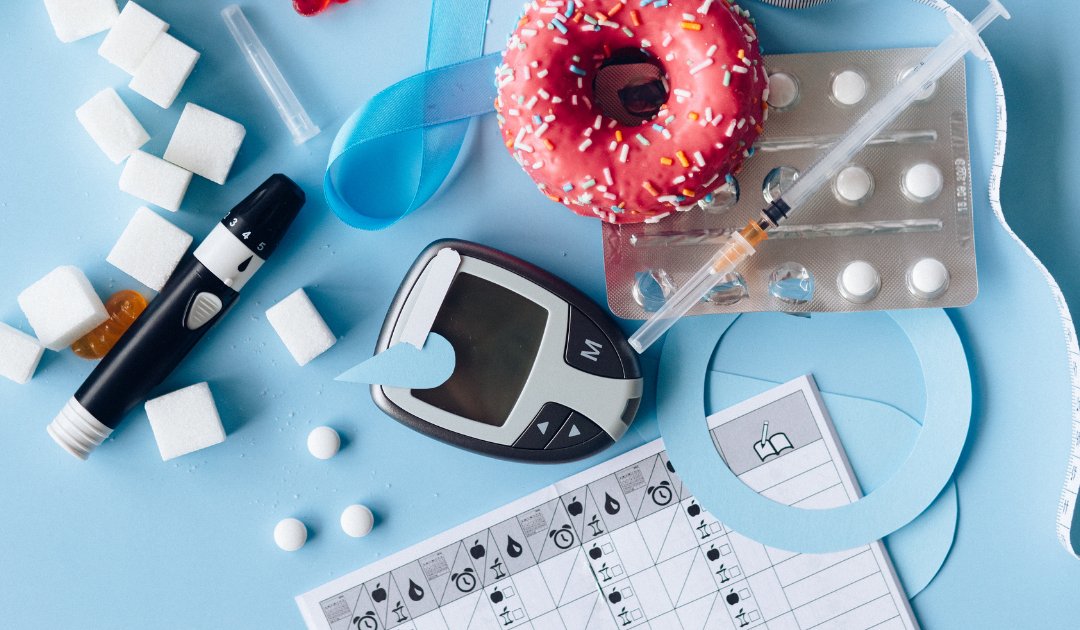
by Amy Plano | Aug 8, 2023 | General Nutrition
Do you find yourself asking, can I reverse prediabetes with diet and exercise?
The levels of people getting diagnosed with prediabetes are climbing every year. Eventually, a good portion of those people will progress to type 2 diabetes.
That, as you may know, can have serious health consequences. So before prediabetes progresses further, it is essential to use an early intervention of diet and lifestyle strategies.
You can beat prediabetes and reverse it for good! With the right tools and strategies in your toolbelt, your blood sugar levels will drop, and your unwanted symptoms will be gone.
In today’s article, I will be going over what pre-diabetes is, common risk factors, and the signs and symptoms to look out for. I will also give you three tips for using diet and exercise to reverse prediabetes.
So, let’s get started!
Did you know working with a specialized registered dietitian can support your prediabetes health journey? And guess what- you may be able to use insurance coverage for your session! Head over to this page to learn more.
What is Prediabetes?
Prediabetes is a health condition in which blood sugar levels are very high, reaching 100 to 125 mg/dL or 5.7-6.4% A1C, but not high enough to be considered type 2 diabetes.
If you are diagnosed with prediabetes, you are at a higher risk of developing type 2 diabetes in the future, in addition to other devastating health conditions, including heart disease, stroke, and heart attack.
For your reference:
Blood Glucose Levels Include:
- Normal: 70-99 mg/dL
- Prediabetic: 100-125 mg/dL
- Diabetic: 125+ mg/dL
Your Primary Care Doctor Might Test A1C Status:
*This test provides an average blood sugar level over the past 3 months.
- Normal: Below 5.7%
- Prediabetic: Between 5.7 and 6.4%
- Diabetic: 6.4% or higher
What Causes Prediabetes?
Blood sugar levels can rise due to a hormone called insulin not processing glucose properly in the body.
Insulin, made by the pancreas, transfers blood sugar to cells to use as energy later on and thus helps monitor blood glucose levels appropriately.
If you have prediabetes, your body is not responding normally to insulin, and as a result, the pancreas will continue to produce more and more insulin until even the pancreas itself cannot keep up.
Blood glucose levels will continue to rise, leading to prediabetes, then potentially type 2 diabetes.
If your blood glucose levels eventually reach type 2 diabetes status, it indicates insulin resistance occurring, where your body doesn’t recognize the presence of insulin.
Signs and Symptoms of Prediabetes

It is important to note that you could have prediabetes and not even know it. In fact, one in every two people is unaware they have the condition!
You may not experience any specific signs or symptoms until serious health concerns (like type 2 diabetes) occur.
Feeling down and not like yourself recently? It is important to be aware of the signs of prediabetes so you can get your levels tested by your primary care doctor before it’s too late!
Here are a few signs and symptoms of prediabetes to look out for:
- Frequent urination
- Excessive thirst
- Irritability
- Moodiness
- Weight gain
- And more!
Risk Factors of Prediabetes
Additionally, there are risk factors for prediabetes that are important to understand.
These put you are a higher risk for developing prediabetes, meaning you will want to keep a closer eye on your blood sugar levels and diet and lifestyle habits.
These risks include:
- If you are 45 years +
- If you have had gestational diabetes
- If your mother, father, or siblings have been diagnosed with type 2 diabetes
- BMI > 25 kg/m2: Overweight – Obese BMI Status
- If you are a chronic smoker
- If you are physically inactive less than three times a week: sedentary activity status
- Having Polycystic Ovarian Syndrome (PCOS)
*There are genetic research trends for prediabetes as well, showcasing other uncontrollable risk factors. It is currently still not fully understood why, but 17.1 million more men were diagnosed with diabetes in 2017 than women.
In addition, ethnic and racial groups, including African Americans, Hispanic/Latino Americans, American Indians, Pacific Islanders, and Asian Americans, are at a higher risk for developing diabetes.
Can I Reverse my Prediabetes Diagnosis?
Yes, absolutely! Prediabetes is, in fact, a reversible condition.
Lifestyle and dietary changes can ultimately reverse your prediabetes status and reduce your risk of other chronic diseases. They should be the first-line approach for reversal.
Your second question is probably wondering, can I reverse prediabetes with diet and exercise?
Weight and physical activity status are two lifestyle intervention factors targeted to stop the progression of prediabetes to type 2 diabetes.
Since physical activity increases ‘insulin sensitivity,’ the body will begin to recognize the presence of insulin, allowing the blood glucose to decrease and move to muscle cells for energy use.
When it comes to your diet, the sugars inside your food get broken down and can raise your blood sugar in varying amounts depending on what and how much you eat.
3 Dietitian-Approved Tips to Reverse Prediabetes
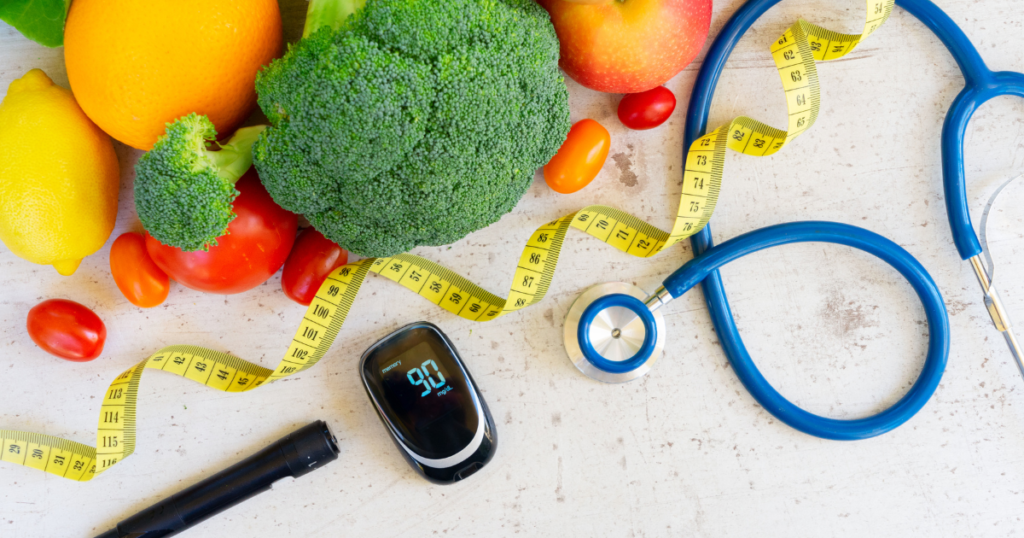
Now I will share three tips you can start doing today to reverse your prediabetes!
Tip #1: Increase physical activity levels to 3-5 days a week, 30 minutes + each.
- HIIT workouts are extremely efficient in helping control glucose, lower abdominal fat, and thus decrease weight status
- Find what workouts work best for you and are the most enjoyable for you
- Find friends who have similar fitness goals to you to surround yourself with
Tip #2: Consume low glycemic index foods to reduce blood-sugar rollercoasters
A plethora of research studies have found a nutritious diet rich in low-glycemic index foods and fiber, partnered with less consumption of sugar-containing beverages, will decrease the risk of diabetes by 18-40%!
The glycemic index (GI) indicates how quickly a particular food causes our blood sugar to rise. The lower the glycemic index, the gentler the food will be on raising glucose levels.
Consuming low glycemic index foods are a great choice for prediabetics as they help control blood glucose levels, reducing the risk of blood glucose spikes.
Blood sugar spikes can ultimately cause further health complications and increase cardiovascular health.
Example list of low GI foods:
- Greens: spinach, kale, collards, beet
- Fruits: apples, peaches, strawberries, oranges, cherries, coconuts, blueberries, pears, plums, grapefruit
- Vegetables: raw carrots, snow peas, broccoli, tomatoes, cucumber, bok choy, cauliflower, celery, eggplant, cabbage, mushrooms
- Low GI Grains: Barley, All-Brand & Fiber One Cereals, Oat bran, whole-grain pasta, sourdough bread
- Dairy: skim, low-fat, whole milk
- Legumes: Kidney beans, chickpeas, black beans, lentils, tofu, and soy-based products
- Nuts: Peanut + almond butters
It is important to note that the glycemic index is only ONE way to classify food.
A low GI index score doesn’t necessarily make a food healthy or not healthy! It will just be a great gauge for those hoping to maintain adequate blood glucose levels.
Tip #3: Increase your fiber and protein intake using whole foods.
Increasing both your protein and fiber intake can help you reverse prediabetes and lower your blood sugar levels.
Protein and fiber both increase satiety more than quick-digesting simple carbohydrates by slowing your digestion and allowing you to stay fuller longer. This also reduces how fast your blood sugar spikes after eating a meal.
Because of this, protein and fiber support long-term weight loss and prevent weight regain. Losing weight (in a healthy and sustainable way, of course) will help reverse prediabetes.
It is also a good idea to prioritize more whole foods and less processed foods.
Processed foods tend to be high in added sugars and refined carbohydrates that can contribute to high blood sugar levels.
Add plenty of fresh produce, lean proteins, healthy fats, and whole grains into your day to promote a balanced diet.
Reversing Prediabetes with Diet and Exercise: The Takeaways
I know prediabetes may be a daunting diagnosis. But lucky for you, there are lifestyle and diet interventions that can help reduce the risk of progression to type 2 diabetes!
All in all, here are my 3 dietitian-approved tips for reversing prediabetes:
- Increase physical activity levels to 3-5 days a week, 30 minutes + each.
- Consume low glycemic index foods to reduce blood-sugar rollercoasters!
- Prioritize less processed products, whole fruits and vegetables, and foods high in protein and fiber and lower in sugar.
There is hope! If you are reading this, you are already making steps forward to a better lifestyle and a happier you.
Looking for additional guidance and support with nutrition and blood sugar levels? I know this all can be overwhelming at first, but don’t worry, I got you!
Head over to my services page to learn more about my 1:1 premium nutrition counseling services. There is no better time to take charge of your prediabetes and use diet and exercise to reverse it for good!
by Amy Plano | Apr 24, 2019 | General Nutrition
Did you know there are over 50 DIFFERENT names for added sugar ? Now, that is KRAZY with a capital K!
And let’s be crystal clear – I am NOT talking about the type that naturally occurs in fruits, veggies, whole-grain products as well as in dairy. We are talking about the sugar that is added to food during processing to enhance flavor, texture and shelf life.
Added sugar is typically composed of the either glucose, fructose and/or sucrose. Unfortunately, many food manufacturers are sneaky and hide the total amount by listing it under several different names on a package’s ingredient list.
As if reading labels wasn’t hard enough to begin with!
Any look familiar?

However, sadly the list does not end here my friends. Check out this quick article from Healthline to learn about the 56 (yes, you read that correctly!) other names that sugar goes by.
Talk about an unsavory alias!
Do any of these surprise you?
Raise your hand if you thought agave was a better choice than white sugar?
Surprised to hear that coconut sugar is a “no-go”?
That leads us to the next important question.
How much added sugar are you allowed per day?
Survey says…
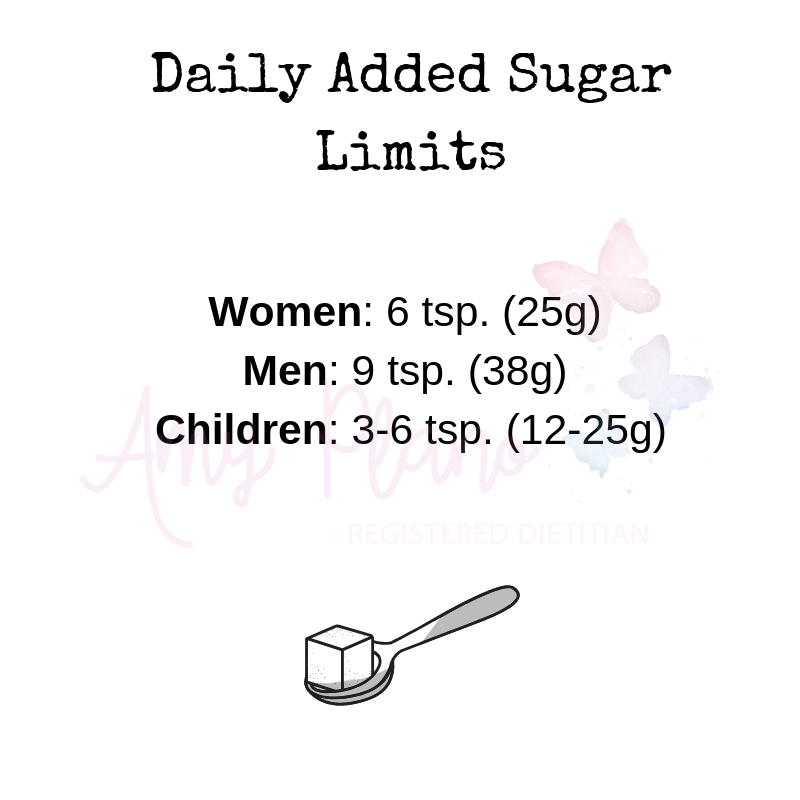
But let’s not sweat the small things. Whole foods like fruits, veggies, whole-grains and dairy products naturally contain small amounts of sugar. However, they are also nutrient powerhouses brimming with fiber, vitamins, minerals and phytonutrients. With these added features, whole foods are processed differently and don’t have the same detrimental effects of added sugars.
Therefore, the most effective way to reduce your added sugar intake is to J.E.R.F. – just eat real food. Plain and simple.
However, if you do decide to buy packaged foods, don’t be a slave to label. Be an informed consumer and stick to your daily quota.
Got questions on added sugars? Hit us up in the comments below. We understand this topic can in fact be tricky and we are happy to help!
Hugs & High Fives,

by Amy Plano | Apr 3, 2019 | General Nutrition, healthy snacks
Snacks – Open Those French Doors When you Get the Munchies
I confess. I am a snacker at ♥. I know some people just don’t eat snacks. They eat their 2-3 main meals per day and nothing in between. I my friends am NOT that girl.
Often I prefer to have snacks rather than meals. But not just one or two snacks. More like a personal ‘buffet’ of all things snacky. You see, my husband is not a snacker. Because well, tough guys don’t snack. Hee Hee! SO any and all snacks in the house are for me, myself and I.
A little guac, some hummus, a couple bites of scrumptious cheese, some raw veggies and maybe even a couple spoonfuls of full-fat Greek yogurt. That sort of stuff just makes my heart smile. It is like a party – but I am the only one there. After all, snacks are delicious. Right? I am just sayin’.
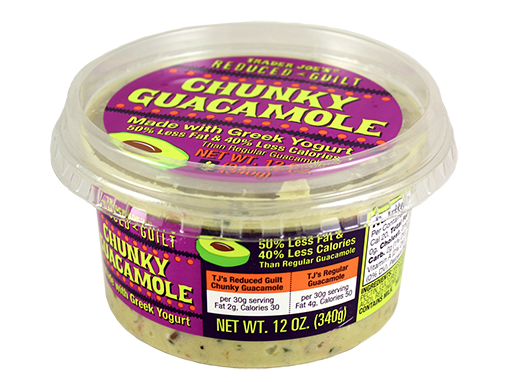
Trader Joe’s Guiltless Guacamole – one of my all time favorite snacks
Therefore, as a Registered Dietitian you probably don’t find it odd that I get tons of questions about snacks. I was trying to think if I could come up with a universal guideline when it comes to snacks. Then it hit me – mid ‘buffet’ line at my very own house: snack from the fridge NOT your cabinets.
Get Your Snack On
Fruit, veggies, yogurt, single-serving hummus & guacamole, cheese, and even leftovers are all super-duper healthy snack-a-roonies that all live in your refrigerator. Compare them with the snacks like chips, crackers, sweets and treats that typically reside in your kitchen cupboards. Therefore, looking to your your fridge when you get the munchies should be a no-brainer!
Set yourself up to succeed with healthy snacking by being proactive. Stock your refrigerator with healthy (and delicious!) options and make a solid effort to prep them ahead.
Wash and slice fruits and veggies BEFORE you even put them away when you return from the supermarket. Rock your Instapot to hard boil a half a dozen eggs. Can I say game changer! Or if you are super lazy grab some precooked hard boiled eggs from Traders. And no – they are not as sketchy as you might think. Stash leftovers in single-serving clear containers (so there is no guessing what is in them!). No leftovers? Pick up a ¼ pound of chicken or tuna salad from the deli. Both make for delicious snacks. Buy single servings of cheese like Baby Bels, mozzarella sticks and Laughing Cow. Then arrange your refrigerator so the healthier foods are front and center, making it more likely that they’ll be the first thing you reach for when you’re hungry.
Easy peasy! Now sit down and high five yourself. You worked hard. No get yo’self a snack.
Hugs & High Fives,

P.S. Never. Ever. Ever. Grocery shop when you are hungry! Here is actual footage of my cart at Trader Joe’s last week.
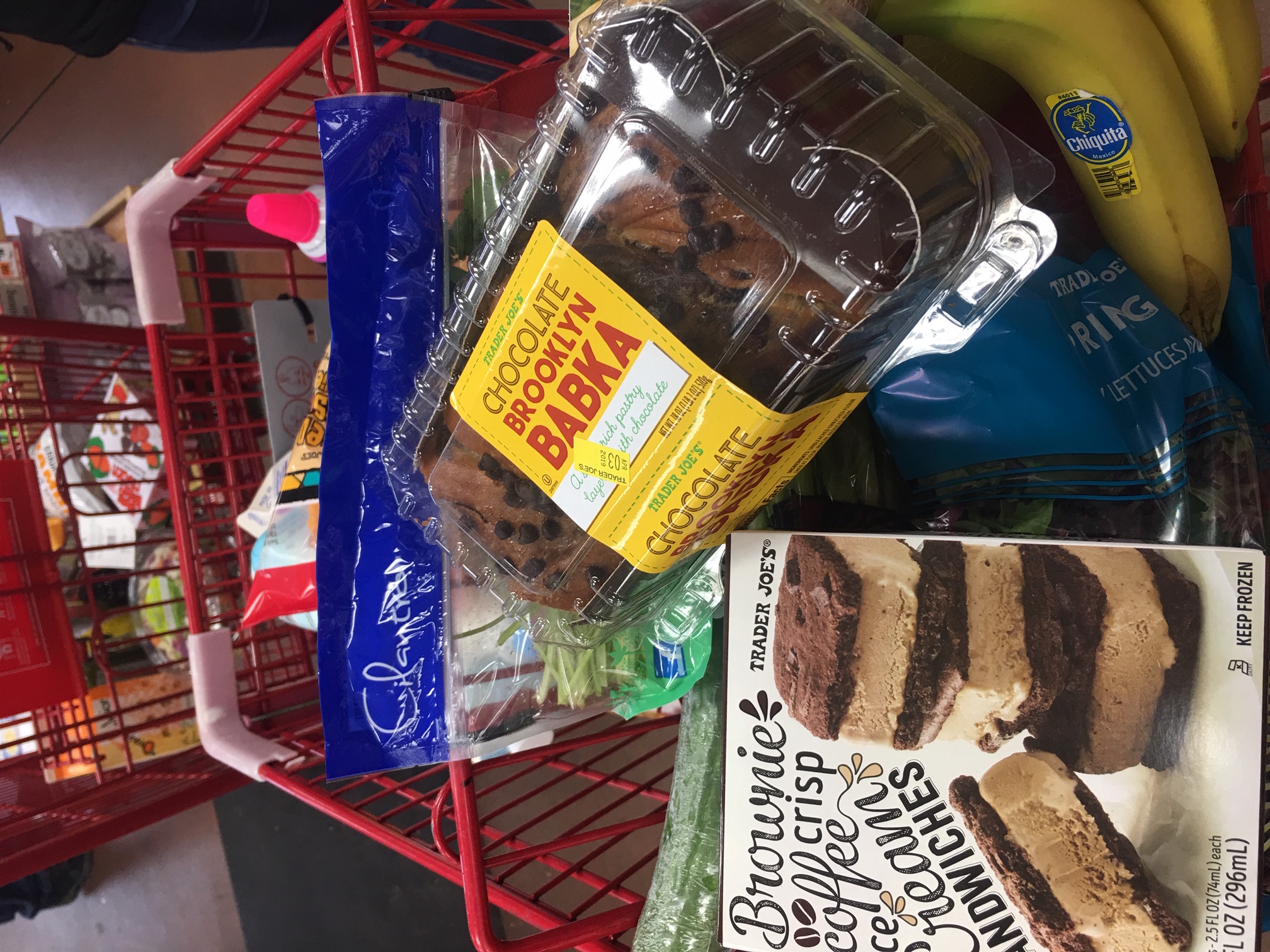
Dietitian Disaster!
I kid you not! There is pretty much about $150 worth of snacks in that cart 🙂 At least I bought bananas, right? Even dietitians have less than stellar days!
by Amy Plano | Mar 5, 2019 | General Nutrition, weight loss
J.E.R.F.
Today’s nutrition tip is brought to you by the acronym J.E.R.F. – Just Eat Real Food. There are a million ways to spin off of this word (and the relative term real) but the direction I am going to is with ‘pseudo’ foods. Bare with me … I promise you don’t need to eat cauliflower to feel the love.
Last week I posted this silly quote on social media:

And while it definitely made my chuckle – it also made me realize just how many foods we come across on a day-day basis are foods that have turned into things they really are not:
-
- Cauliflower pizza
- Cauliflower tots
- Cauliflower rice
- Mashed cauliflower
- Noodles made from zucchini, carrots, butternut squash
- Coconut ice cream
- Riced broccoli
- Impossible burgers– non-meat burgers that ‘bleed’ beet juice
- You get my point here 🙂
Cauliflower pizza IS NOT pizza.
And truth be told most versions don’t even remotely come close to the real deal pizza. In all honesty, most cauliflower pizza is not EVEN that much healthier. The crust is generally made with cheese, eggs and more cheese. I have nothing against cheese or eggs– but when you spec it out most can clock in just as high in calories as regular pizza depending on the toppings.
I love zoodles every. once. in and a while.
Of course they are a vegetable high in fiber, nutrients and vitamins and minerals. But what is wrong with having real pasta every once and a while? Yes – I know the carbs. But say you really love pasta why not just have the real deal occasionally in small amounts?
Riced broccoli — first of all have you tried it? It tastes just like broccoli! But are you surprised. Likely not because it IS broccoli.
Anything vegan trying to resemble meat – my only question is a big fat WHY?
Why not just eat real meat if that is the flavor, texture profile you are going for. I can only get away with saying that because I was a vegetarian for 10 years, a vegan for 2 years and a raw vegan for 1 year. I also used to have long dread locks and lived in Costa Rica – so go figure! Now I eat meat – love it – and often I am embarrassed to tell you that I used to eat something called “tuno.” No that is not an expensive Italian tuna in a high grade olive oil. Tuno was a ‘fake’ vegetarian based “tuna” that came in a can and smelled like tuna. Wicked gross.
Bottom Line
My point here is don’t eat foods because you feel like you have to. If you love riced broccoli then … rock on with your bad self! But don’t feel like you have to love it and convince yourself it tastes like rice. Because it certainly doesn’t! Also remember – you don’t have to be anyone or anything you don’t want to be. So why should your food be any different?
You don’t have to eat cauliflower pizza and ‘pretend’ it is delicious. Why not just head down to Modern Pizza once a month and tear it up? (When you do might I suggest the Veggie Bomb with hot cherry peppers!)
Furthermore, you don’t have to kill yourself and do a Whole-30 and deprive yourself of dairy when you love cheese. What are you going to do after you the 30 days? Will you never. ever. ever. return to eating your favorite food group? Survey says – I think not my friend! So why torture yourself and take something out of your diet you love. We have to be realistic with our food choices. If not then behavior change becomes unsustainable and we crash and burn every single time.
You see pizza, tater tots, rice and pasta are NOT the enemy. It is the way we abuse these foods and our relationship with them that makes them unhealthy.
Love yourself enough to eat the real deal
Do you think eating pizza or cheese for that matter will completely derail all your hard work? Hardly. Eating them every day – highly likely! But occasionally eating the foods you love — you know the ones that puts a smile on your face — should be part of your lifestyle These foods are not something you should try to replace. Because you and I both know there is absolutely no replacement for great REAL high quality food.
See part of the cool thing about the food we put into our bodies is that for many of us it is one the few things in life we can control. So why not make a pack to yourself that you are no longer going to eat something just because you feel like you should. You are no longer going to feel bad because you just don’t love spaghetti squash. Instead you are going to have a small serving of the real deal with some awesome sauce and homemade meatballs and call a night. You are not going to feel bad. You are not going to feel like you failed. Instead, you are going to be proud that you made a conscious decision to eat real food that made your little heart sing.
I wanted to leave you with some parting words 🙂

by Amy Plano | Feb 18, 2019 | General Nutrition, healthy eating, motivation Monday
I hope you are having an all-star start to your week. Coming off the weekend is alway tough. However, there is no day better than Monday to get back on track. It is time to shake off the Monday blues and bring your focus back to healthy eating. Your first stop – the grocery store. Today I am here to provide you with my three absolute BEST tips to grocery shopping like the champ you are. Put down that grocery store hater-ade and grab yourself a cart. Things are about to get fun!

Grab a cart and get your shop on 🙂
I ♥ grocery shopping
Grocery shopping is pretty much one of my favorite past times. I guess you could even call it a hobby of some sort! Anyone who knows me – knows I love grocery stores. No matter where in the world I might be I am constantly on the look out for grocery stores so I can check out the latest and greatest food finds.
However, with that being said shopping aimlessly is never a good thing. BAD things happen in grocery stores for Amy Plano when she does not have a plan. And I can only imagine the same goes for many of you! Please tell me I am not alone?
So today I am going to rattle off some of my top ticks for staying on track with your diet at the grocery store. I know none of these are new concepts to you. However, if you are like me, I can ALWAYS benefit from gentle reminders on how to improve my behavior.
Game plan it on Friday
I have a rule for myself on Friday afternoons. I cannot leave until I have written down at least two things I am cooking for dinner for the up and coming week. For the other meals I fill in the blanks with leftovers or go-to meals. Easy ones like baked chicken thighs or flank steak on the grill rounding out with some Trader Joe’s frozen veggies. However, I must have two concrete (not made up in my head as I have a tendency to do!) meals that I commit to making before I walk out the door. No ifs, ands or buts about it. That way when I go to the grocery store I am exciting about what I am buying.
I generally just pull up my Pinterest board called “Dinner” (yes – super original) and see what looks interesting and is hopefully in season. Here is the link for my dinner board in case you need some inspiration. Once I have identified the recipes I jot down the ingredients I will need in my spiral plain Jane notebook. This when I go home I know what I need and can compare it against what foods I already have.
A typical entry might look like this:
Monday: Baked chicken thighs, Trader Joe’s frozen sweet potatoes & broccoli
Tuesday: Egg Roll in a Bowl
Wednesday: Sushi
Thursday: Crock Pot Chicken Chili
Friday: Low Carb Chicken Quesadillas with cabbage lime slaw
Saturday: Out
Sunday: Flank Steak, Baked Potatoes and Salad
It is important to note these dinner recipes do not need to be fancy! Nor does your weekly ‘meal plan’ need to be elaborate. People get wrapped up in the semantics. They say to themselves I don’t know what to make that is healthy. Come on. You know what is healthy and what is not. You do not need me to tell you day-day what you should eat. These meals should be something everyone enjoys and resembles something relatively healthy. Depending upon your family the term relatively healthy likely means different things. But don’t sweat the small things.
Just write it down – the very act of writing things down help sets you up to succeed. Plan to succeed right from the start.
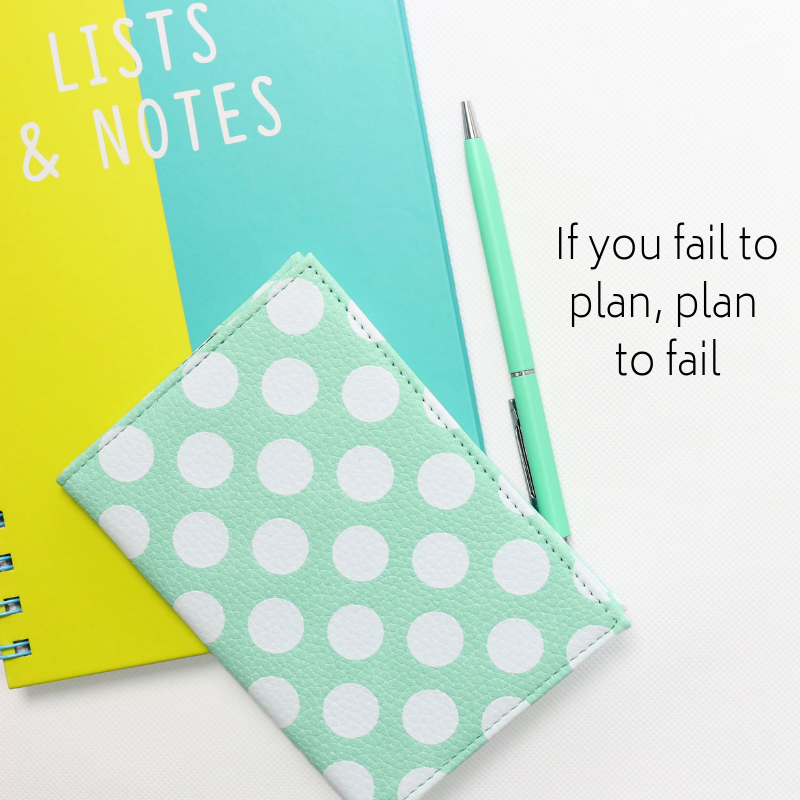
I know you have heard this quote a zillion times – but the message never gets old.
By planning ahead on Friday you will save yourself a ton of stress, time and money at the grocery store. It really puts YOU in the driver seat rather than leaving your meals to chance. So many of my patients do awesome all day with healthy eating. But then dinner rolls around and nothing is planned – so they reach for what is most convenient but not always healthy. They then beat themselves up. By coming up with a plan before the fact this can easily be avoided.
Because you and I both know when we go to the grocery store with no meals planned – food goes to waste and we come home with food but no meals = no bueno 🙁 It’s like having a closet full of awesome clothes – but no perfect “outfits”. We aint’ got time for that!
Make a list and stick with it
DO NOT step foot in any grocery store without a list. Okay – I admit I am the worst at this. However, we all need to raise the bar and follow through with grocery list making. Maybe I should start a self-help group for this? Honestly. I don’t care if you need to scribble the list down on a receipt you find in your purse. You MUST have a shopping list BEFORE you step foot in that grocery store.

Just write it down – the very act of writing things down sets you up to succeed
Shopping with a list is so critical. Not only does it save money because you are only buying exactly what you need – it also saves you from buying less than stellar foods that were not on your list. By making a list and sticking to it you can get in and out of the grocery store without cruising down every aisle wondering, “Do I need these delicious bourbon pickles from Traders?” – nope not on the list. Move on sista’!
The Type A person in me likes to arrange my list on how the store is set up. The list often starts with vegetables, then fruit, next protein and ultimately the dairy aisle. That way I don’t need to back track. Also the crazy dietitian in me likes to play a game when I grocery shop. I like to see if I can only manage to shop the perimeter of the grocery store. As it is really in the aisles that most people get into trouble with processed foods. Sometimes I am successful – sometimes not. However, I do make a point to spend more time out of the aisles if possible. But sometimes those Ghost Pepper Potato Chips do call my name in aisle 3.
Never ever shop hungry
I know this one is really a no brainer – but nothing good ever comes of going to the grocery store hungry. I don’t care what you eat – whether it be a meal or a snack – but dear friend please have something! If not everything looks good. You end up buying things that you would have never have even contemplated putting in your cart. If you go astray – always try to J.E.R.F. If you do that – then the damage might not be too bad.

And guess what? If it ends up in your cart – it ends up in your house. And if it is in your house — you will likely eat it 🙂
So why not avoid this nonsense all together? Keep healthy snacks in your car. Some suggestions include single serving packs of almonds, RX bars, single serving packet of trail mix, small bags of popcorn, and my personal favorite beef jerky.
Well my friends that is hopefully motivation on this Monday to get your butt in gear. Happy grocery shopping and hope to see you at Traders, Shop Rite, Whole Foods, Aldi’s or Costco or any other grocery store in between.
Need help navigating the jungle that we call the grocery store? Did you know the dietitians at The Plano Program conduct both one-one and group grocery shopping tours? Well we sure do! Email us us at amy.plano@yahoo.com to sign up.
Hugs & High Fives,


 A celiac diet plan is a meal plan for someone with celiac disease. Patients with celiac disease must avoid gluten, the protein in wheat, barley, and rye.
Creating a diet plan can help patients with celiac stay on track with their health goals and ensure they’re eating the right balance of nutrients.
Without a diet plan, you may be tempted to eat unhealthy foods that could lead to unwanted weight gain and other health concerns.
Further, patients with celiac are at a greater risk for nutrient deficiencies due to digestive tract damage. Because of this, you’ll want to eat a diet primarily of nutrient-dense, whole foods.
A celiac diet plan is a meal plan for someone with celiac disease. Patients with celiac disease must avoid gluten, the protein in wheat, barley, and rye.
Creating a diet plan can help patients with celiac stay on track with their health goals and ensure they’re eating the right balance of nutrients.
Without a diet plan, you may be tempted to eat unhealthy foods that could lead to unwanted weight gain and other health concerns.
Further, patients with celiac are at a greater risk for nutrient deficiencies due to digestive tract damage. Because of this, you’ll want to eat a diet primarily of nutrient-dense, whole foods.
 Feel free to modify this menu based on your dietary preferences and restrictions.
Feel free to modify this menu based on your dietary preferences and restrictions.


























